Geoffrey Zakarian's 13 Best Cooking Tips For Home Chefs

- Oops!Something went wrong.Please try again later.
- Oops!Something went wrong.Please try again later.
Let's face it: it's exhausting trying to brainstorm ideas for what to cook for dinner every single night of the week. While takeout is always an enticing option, it's not exactly budget-friendly in these inflation-weary times. Instead of whipping out your wallet for another fee-heavy DoorDash order, try turning to an expert for a few home cooking tips.
Celebrity chef Geoffrey Zakarian is no stranger to the monotony of weeknight cooking. The acclaimed restauranteur balances an empire of eateries, cookbooks, TV hosting gigs, appearances at foodie events like The South Beach Food & Wine Festival, and overseeing a line of cookware with time at home with his wife and daughters. A jam-packed schedule means that he doesn't always have a few extra hours to whip up a multi-course meal of the modern American fare he's known for. Instead, you're more likely to find him coming up with quick bites and riffs on homemade cocktails to share with family and friends.
Just like the rest of us, Zakarian likes to keep things simple in his home kitchen, using a few shortcuts and workarounds to transform everyday ingredients into mouthwatering meals without putting in too much extra effort. After all, you don't earn a title like "Iron Chef" without having a few tricks up your sleeve. From the simple to the spicy, here are 13 of Geoffrey Zakarian's best cooking tips for home chefs.
Read more: 11 Cleaning Tips For Keeping Your Oven Spotless
Flavor Your Rice
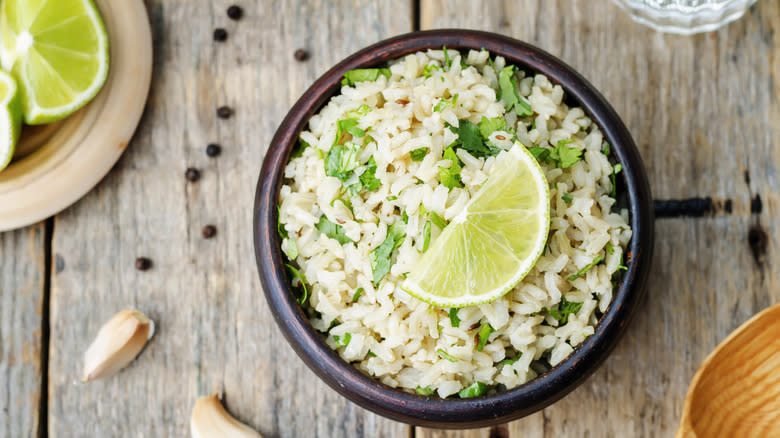
A cheap and easy way to round out a meal, rice is about as versatile an ingredient as there is. Think of each grain as a blank canvas for flavor and you've got an arsenal of endless possibilities at your fingertips. "When you flavor rice, it's really interesting," Zakarian said in an interview with Tasting Table. "So we try to flavor it with fresh bay leaves and things like that."
It's important to note that fresh bay leaves, like the ones Zakarian likes to use, do have a slightly different flavor than the more commonly used dried bay leaves. The former can be on the bitter side, while the dried variety tends to be more herbaceous, similar to thyme or oregano. Both will certainly lend flavor to your rice; fresh herbs are much more likely to leave a lasting impression on your taste buds.
Taking a page from Zakarian's book, you can add a flavor boost to plain rice by infusing your cooking liquid with herbs. Simply add some dried herbs to boiling water or the rice cooker before adding your grains and allow them to steep while the grains puff up and absorb all those subtle, earthy notes — be sure to check that your bay leaves are reasonably fresh before relying on them to impart flavor. While the resulting rice won't pack a massive punch, it will have a complex, taste that acts as a luscious base for richer dishes like curries and stewed meats.
Don't Be Afraid Of Salt
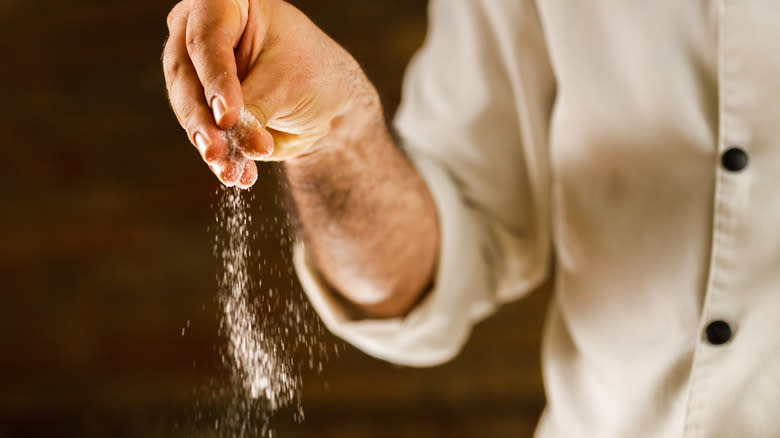
Home cooks often underestimate how much seasoning it actually takes to produce a restaurant-worthy dish. When it comes to prepping pricy ingredients like steak, most of us err on the side of caution, afraid to ruin an expensive cut of meat with overzealous seasoning. Zakarian's top tip when cooking steak? "People never add enough salt," he said. "All four sides of the steak need a generous dose of salt."
So, what's the big deal with salting steak before cooking it? Not only does a generous dose of salt bring out a prime cut's beefy goodness, but it also helps the meat to form a nice golden crust during the searing process — a detail that can take your kitchen chops from amateur to awe-inspiring. But you won't achieve that sought-after crust with just any salt. Skip the table salt and reach for kosher or sea salt instead. A coarse-grained salt's flakier texture helps it to pull moisture to the surface and then dissolve into the meat more quickly, resulting in a moister bite.
To achieve the juiciest results, salt your meat like a steakhouse does. Liberally sprinkle your entire steak with kosher salt and let it rest overnight in the fridge — drying out the meat's exterior promotes better browning. Once your steak is cooked through, rested, and sliced, add another dusting of kosher salt for an extra indulgent final flourish.
Add Mayo For Extra-Crispy Grilled Cheese
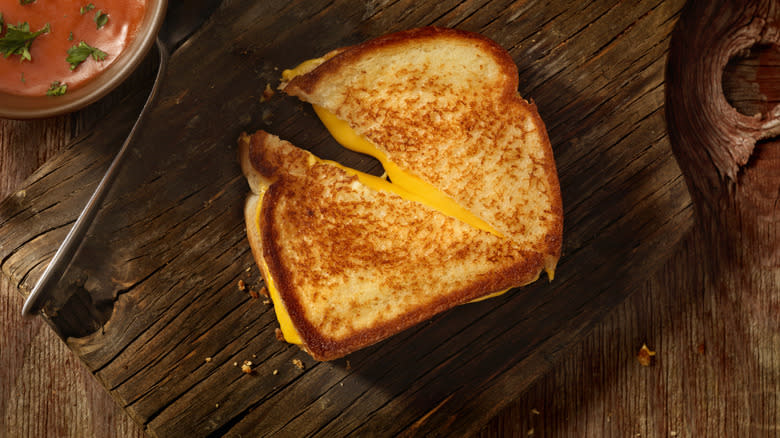
As polarizing a condiment as it may be, mayonnaise has been proven to work its magic in recipes from creamy potato salad to well-seasoned elote and can make a mouthwatering addition to just about any sandwich. But according to Geoffrey Zakarian, mayonnaise doesn't just belong in between slices of bread. To achieve the perfect grilled cheese, the talented chef advocates for coating the outside of your bread with mayo instead of butter.
For Zakarian, it's not just a matter of preference. While both fats help to promote browning, mayonnaise enjoys a few distinct advantages. First, mayonnaise is soft and spreadable right out of the jar. Anyone who has ever tried to spread cold butter over soft bread knows how valuable this trait is when making a mouthwatering grilled cheese. Second, mayonnaise is made with oil, which has a higher smoke point than butter.
When searing your grilled cheese, a too-hot pan can sometimes scorch the milk fats in the butter before the bread is browned, resulting in a burnt exterior and unmelted interior. A protective coating of mayo helps the bread to get brown and crispy without burning before the cheese has reached gooey perfection, an especially important factor for Zakarian's secret grilled cheese method. The Iron Chef employs some extra insurance by finishing his grilled cheese in the oven to ensure that the cheese melts completely.
Double-Cook Your Potatoes
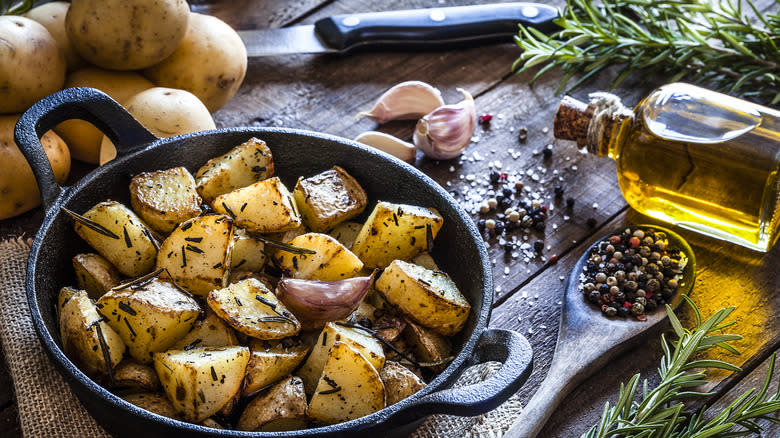
No homestyle dish is complete without a side of potatoes. With a handful of acclaimed new American restaurants under his belt, Geoffrey Zakarian is no stranger to a perfectly cooked potato. In order to achieve the optimal blend of crispy meets creamy texture in his spuds, the chef has a very particular method to which he adheres.
His secret, it turns out, is to make twice-cooked potatoes. First, he suggests boiling your large-diced potatoes (roughly 1 ½ inches) in heavily salted water. Once they're fork-tender, he drains the spuds and cools them on sheet pans until they've cooled and dried slightly. A quick toss in a combination of olive oil, garlic, rosemary, thyme, salt, and pepper renders the potatoes ready for the oven.
He then roasts them at a toasty 425 degrees, shaking once halfway through cooking to ensure even browning. For extra-crispy edges, Zakarian suggests smashing the spuds with the bottom of a glass before the final bake. Either way, these perfectly cooked potatoes are ready to be served when they reach golden brown goodness.
Add Pickles To Your Charcuterie Board
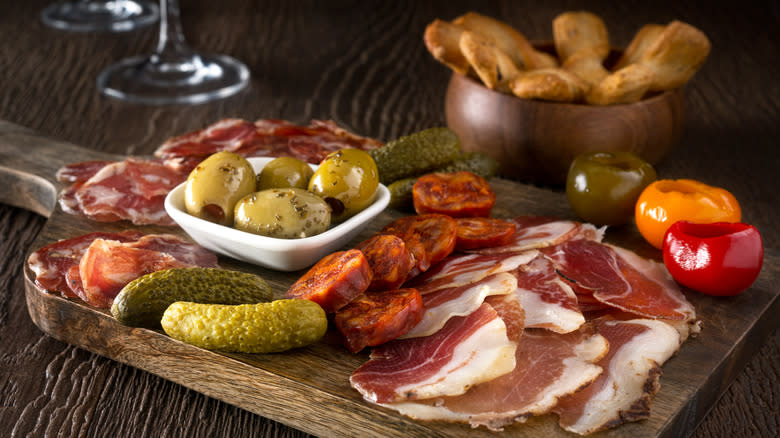
From girl dinner staple to tapas bar treat, charcuterie boards remain a crowd-pleaser for any number of occasions — or for no reason at all. As simple as they seem, these sumptuous spreads actually require quite a bit of culinary know-how to prepare. Balancing flavors and textures is paramount to the perfect charcuterie board experience. Per Geoffrey Zakarian, the ingredient missing from most charcuterie boards is acid. "As much as I like cheese, I almost like pickles more," he said. "You really need that sour bite as a bit of relief from all the fatty meat and cheese."
If you're worried about pickle spears throwing off the aesthetic of your perfectly planned platter, don't. Rather than just tossing on a few kosher dill pickles, take a step back and consider the vastness of the pickle universe. There are dozens of unique types of pickles from which to choose, ranging in flavor from spicy to sweet and everything in between. You don't even have to limit yourself to the standard cucumber. Consider adding other pickled vegetables to your next charcuterie board to create an explosion of color and texture to contrast the richness of the classic meat and cheese.
Use Butter To Achieve A Perfectly Fluffy Omelet
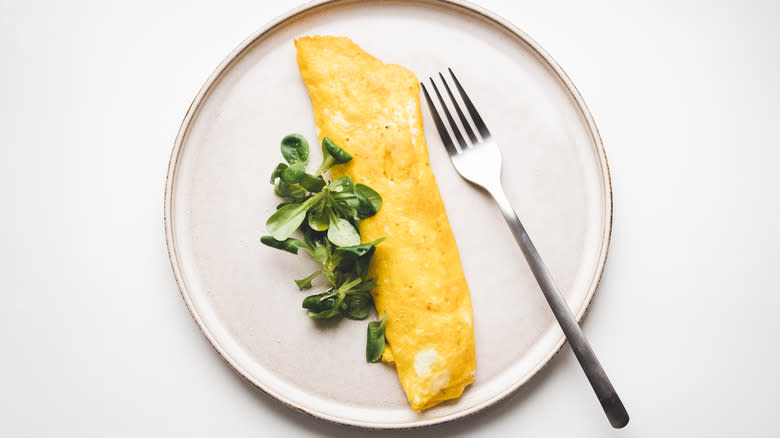
A staple in just about every kitchen, eggs are deceptively difficult to master, even for the most seasoned home cooks. Zakarian offers up a humble solution to the struggle for the perfectly fluffy omelet in the form of butter. But not just any butter, we're talking really cold butter.
The celebrity chef's technique isn't for the faint of heart, as it requires quite a bit more butter than you might be used to using. He suggests melting several tablespoons of butter in a pan before adding your eggs and sprinkling with salt. "Once the eggs hit the pan," he said, "move them constantly with a spatula. Then, add a few pieces of very cold, diced butter. The butter keeps the protein from getting tough."
So what's the deal with the cold butter? It all has to do with temperature control. When heated too quickly, proteins seize up and become tough — basically the opposite of what we're looking for in the perfect omelet. By keeping the temperature of the eggs consistent, you promote even cooking and the protein structure remains loose, resulting in a tender egg. The cold butter also does double duty as a sort of fluffing agent. As the water evaporates out of the butter, it lifts the egg as it cooks, resulting in a perfectly fluffy omelet worthy of an Iron Chef.
A Real Salad Niçoise Needs Tinned Fish
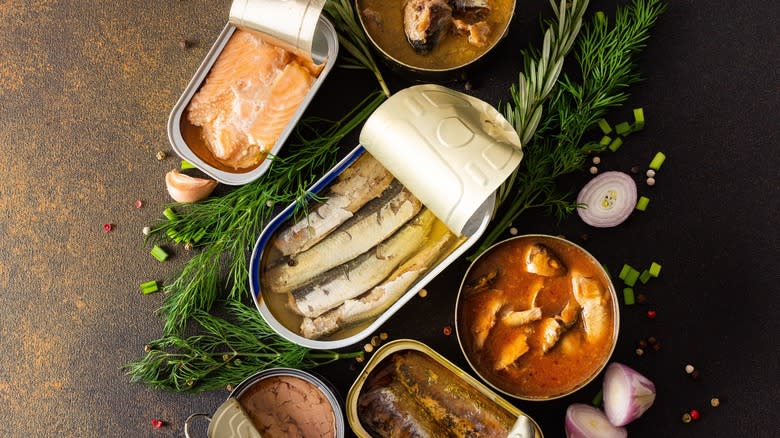
Geoffrey Zakarian swears by canned fish (specifically Spanish or Portuguese tuna packed in oil) for dishes like the traditional salad Niçoise, a warm weather staple in the south of France. If you've had salad Niçoise stateside, you likely haven't had an authentic version. According to Zakarian, only Americans make the classic salad with fresh tuna.
The exact reason for the use of canned fish is unclear. Traditionally, and because it was a typical pantry staple in southern France, salad Niçoise was made with whatever ripe and available produce was available on a given day, then topped with canned fish. Simply put, it was a dish of necessity. Using canned fish packed in olive oil negated the need for a vinaigrette, making this mid-day meal even easier to prepare on a whim. While nearly endless variations on the classic salad have popped up over the years, and both historians and locals argue as to the dish's true origins, Zakarian prefers the classic version: lettuce topped with potatoes, green beans, tomatoes, green peppers, eggs, basil, olives, and that all-important canned fish packed in olive oil.
Add Extra Flavor To Meatballs With Infused Olive Oil
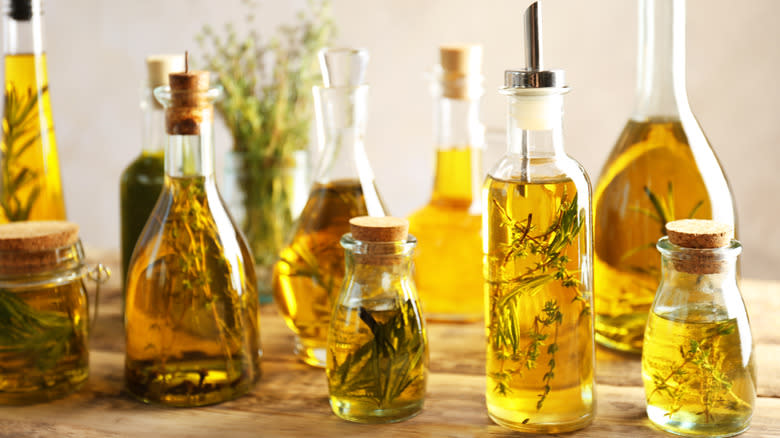
After salt, olive oil is just about the most ubiquitous ingredient there is. Olive oil has earned pride of place in many a kitchen for its myriad uses — as a fat for roasting, sauteeing, and grilling as well as a base for marinades, vinaigrettes, and an endless array of sauces. The oil imparts some fruitiness on its own, depending on which type of olive oil you cook with; it also soaks up flavor when tasty morsels like herbs are introduced over heat. The result is an infused condiment that delivers an extra dose of goodness into just about any dish you choose to cook.
Geoffrey Zakarain employs infused olive oil in flavorful meatballs that are good enough to serve your in-laws. The chef pan-sears his meatballs in herbaceous rosemary olive oil to create a beautiful brown crust and to infuse rosemary flavor deep into the meatballs themselves. This simple step takes just a few minutes but imparts an extra layer of flavor into the dish that just might make your guests think that you've been slaving away in the kitchen all day.
Once you've unlocked the power of infused olive oil, the culinary possibilities are endless. Garlic, ginger, other herbs like thyme, and even citrus can all be used to create unique flavored olive oils that you can use to give a flavor boost to salad dressings, pasta sauces, elevated cakes, and more.
Spice Up Your Crab Cakes With Sriracha
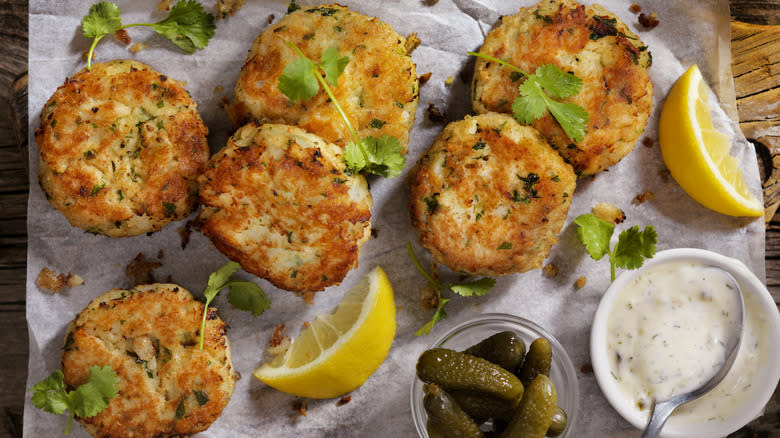
Simple yet sophisticated, crab cakes are an entertaining staple for a reason. And thanks to the elevated quality of canned seafood like crab meat, they are easier to make than ever. As delicious as they are with their crispy crust and lush, cakey interior, crab cakes can admittedly be a little boring in the flavor department. Old Bay works perfectly well as a seasoning agent, but sometimes, you really want to kick things up a notch. In order to give your next batch of homemade crab cakes a one-two punch of flavor and spice, Geoffrey Zakarian suggests adding his secret ingredient: a bit of sriracha. "I think good crab cakes are packed with a little kick, and I've found that sriracha holds its own against Old Bay," he said.
Chili-based sriracha certainly brings the heat, but the fan-favorite hot sauce is also packed with flavorful ingredients that pair well with sweet and meaty crab. Garlic, vinegar, salt, and sugar round out the spice from the chili, and the fermented nature of the condiment brings a slight funkiness to the party that's sure to wake up your taste buds.
Save Leftover Drippings For A Free Flavor Boost
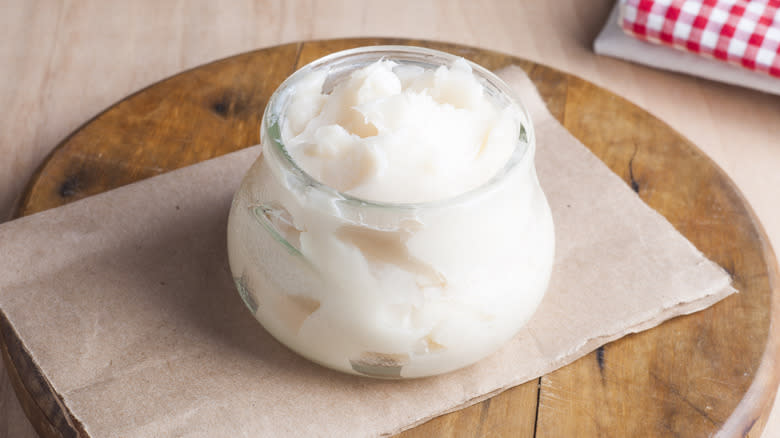
One of the best ways to stretch your grocery budget is to find inventive ways to use up leftovers. Using every scrap of every ingredient you buy not only eliminates food waste but also makes you a better cook. In fact, the top cooking tip Geoffrey Zakarian learned from his mother was not to throw away meat drippings. Bacon grease, chicken skin, and beef fat (among other types of protein byproducts) are packed with flavor and can add extra richness to roasted vegetables, slow-cooked stews, or just about any dish that calls for some form of fat. His mother's lesson was so impactful that the talented toque still uses this technique in his restaurant kitchens today.
Try this tasty tip out for yourself next time you have some greasy leftovers on hand. After cooking your protein, simply drain off the fat into a heatproof container to cool. You can store the cooled drippings in one large container or pour them into ice trays to create little flavor cubes that you can deploy whenever the opportunity presents itself.
Don't Forget To Add Acid
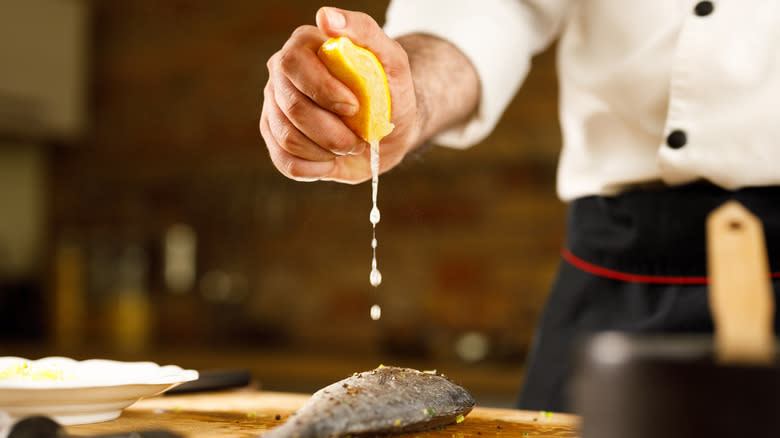
When it comes to cooking, whether at home or at a Michelin-starred restaurant, balance is key. Sweet, sour, bitter, salty, and umami are the five key components of a well-flavored dish, but not all home cooks know how to achieve balance between them. Most of us are guilty of being heavy-handed with the seasonings and still feeling like something is missing from the recipe. Most likely, the answer is acid.
"Everything needs acid," Geoffrey Zakarian said in an exclusive interview with Mashed. "When you taste something without it, then you taste it with it, you realize the difference." For the celebrity chef, chardonnay vinegar is his secret culinary weapon, thanks to its sweet and sour kick. He loves the condiment's acidic kick so much that he claims to have included it in every dressing he's ever made.
Of course, there are dozens of ways to add acid to a recipe without reaching for a specialty ingredient like chardonnay vinegar. A squeeze of citrus like lemon or lime, pickled produce, white wine, or other vinegar products like apple cider or rice wine vinegar all bring brightness to a dish with minimal effort.
Whip Out Celery Salt For A Subtle Flavor Boost
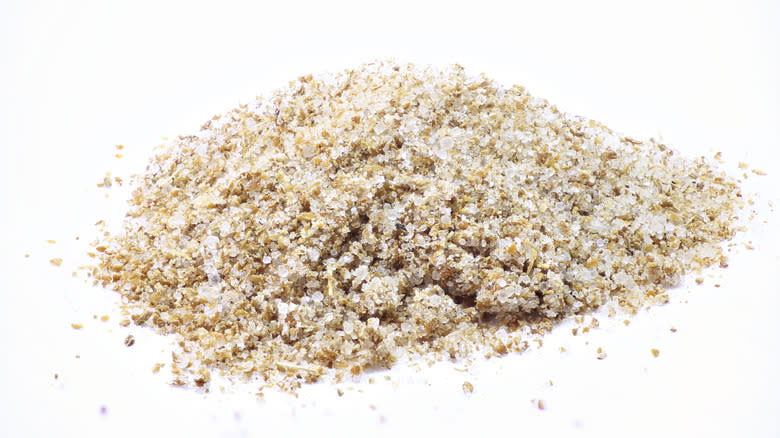
By now, you know the importance of salting your steak before cooking. Zakarian takes this rule a step further by adding a little umami into the mix. The "Chopped" host adds celery salt to his steak rub, along with freshly cracked black pepper and paprika, to create a smoky, herbaceous blend of flavors that bring out the best in a prime cut without overpowering the beef.
An often-overlooked pantry ingredient, celery salt is simply a blend of celery seeds and salt that can bring a bright yet sharp flavor to just about anything it touches. Celery seeds evoke the same grassy flavors as fresh celery, just in a much more potent form. When used in moderation, celery salt can elevate the flavor of everything from a bloody mary to a roast chicken, both applications in which Zakarian employs the unique spice.
If you're nervous about experimenting with the potent salt blend, try adding a dash to mayo-based dishes like deviled eggs, pasta salad, or coleslaw. The celery salt adds brightness to these creamy dishes that can easily be masked with a bit more mayo if you accidentally go overboard.
Green Peppercorns Are The Secret To Steak Au Poivre
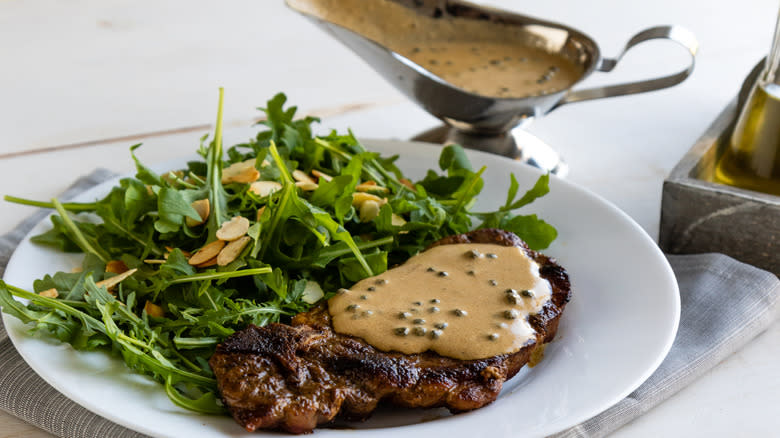
Geoffrey Zakarian has plenty of steak-cooking tips for home chefs that help ensure a beautifully seared piece of beef. He's also got a few ideas for plating. The Food Network personality is a fan of classic bistro fare like steak au poivre and notes that the secret to the dish is in the intentionality of the ingredients. While it may be tempting to go all in on black pepper when making classic pepper steak, the chef suggests another approach.
Zakarian's tip for steak au poivre centers on employing not just one but two types of pepper. "You really need to understand that a traditional pepper steak has pepper on the outside, but really green peppercorn is the base of the sauce," he said. "It's not all just cracked black pepper."
Unlike its spice-forward sibling, green peppercorns are harvested before they've ripened, resulting in a milder, earthier flavor. Using the softer green peppercorns in the steak sauce keeps the dish from becoming overwhelmingly spicy and adds depth of flavor, especially when combined with other luxurious ingredients like shallots, butter, cream, beef stock, and brandy.
Read the original article on Tasting Table

